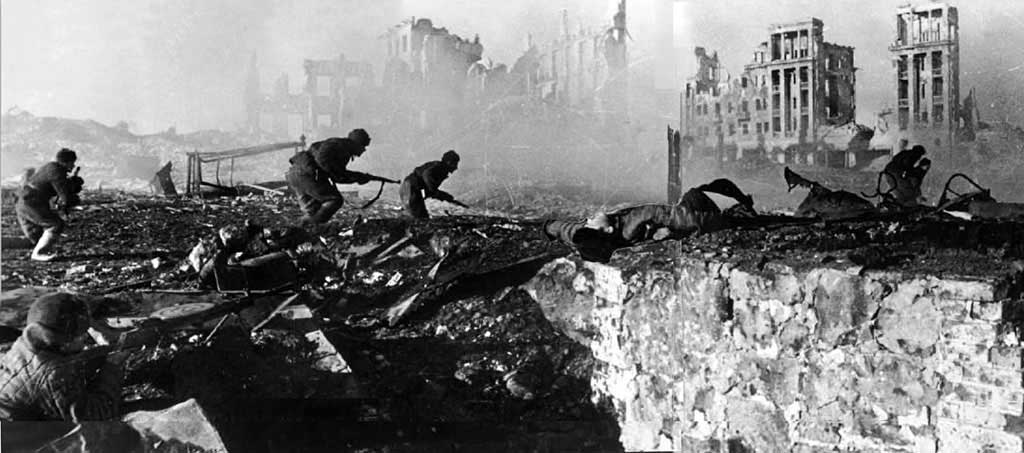Aug 1942-Feb 1943
The largest battle with the most casualties of all time. Over two million men died during one and a half years. The battle put an end to German success in World War II.

Soviet Soldiers On the Attack On a House In Stalingrad, February 1943. Photo by Georgy Zelma
Background
Hitler had declared war on the Soviet Union on 22 June 1941. There was no Western Front at that time and Hitler launched the operation “Barbarossa” and gathered over 1 million men to the Eastern front quickly to invade the oil fields of Caucasus.
Events
By the summer 1942, Germans had reached the Volga River. They were confronted by the Red Army troops near the town of Stalingrad (now Volgograd). Under the commander was Vasily Shuikov, there was fierce fighting for virtually every building.
In November 1942, a massive counter attack was held and a massive army of Field Marshal Friedrich Paulus was encircled. Hitler did not allow him to surrender and ordered to continue fighting in a hopeless state. On February 1943, over 91,000 German soldiers, including Paulus himself, were finally surrendered and taken prisoners.
Results
Both sides had over 1 million men, Axis Forces (Germans, Italians, Romanians, Hungarians) suffered 800,000 deaths, the Red Army 1,000,000 deaths. An important factor in the Soviet victory was cold winter.
Battle of Stalingrad
Aug 1942-Feb 1943
The largest battle with the most casualties of all time. Over two million men died during one and a half years. The battle put an end to German success in World War II.
Soviet Soldiers On the Attack On a House In Stalingrad, February 1943. Photo by Georgy Zelma
Background
Hitler had declared war on the Soviet Union on 22 June 1941. There was no Western Front at that time and Hitler launched the operation “Barbarossa” and gathered over 1 million men to the Eastern front quickly to invade the oil fields of Caucasus.
Events
By the summer 1942, Germans had reached the Volga River. They were confronted by the Red Army troops near the town of Stalingrad (now Volgograd). Under the commander was Vasily Shuikov, there was fierce fighting for virtually every building.
In November 1942, a massive counter attack was held and a massive army of Field Marshal Friedrich Paulus was encircled. Hitler did not allow him to surrender and ordered to continue fighting in a hopeless state. On February 1943, over 91,000 German soldiers, including Paulus himself, were finally surrendered and taken prisoners.
Results
Both sides had over 1 million men, Axis Forces (Germans, Italians, Romanians, Hungarians) suffered 800,000 deaths, the Red Army 1,000,000 deaths. An important factor in the Soviet victory was cold winter.
Siege of Leningrad